
photo courtesy of San Francisco History Center, San Francisco Public Library
The Success of the Fair By the time that the Panama-Pacific International Exposition officially closed on December 4 1915, over 18 million people had visited the fair. On the last day of operation, the fair experienced a record-setting 450,000 visitors. While the Exposition took in over $27 million dollars in receipts, the Exposition Company only made a modest profit of approximately $1,300,000 as the huge construction and production costs exceeded $25 million dollars. 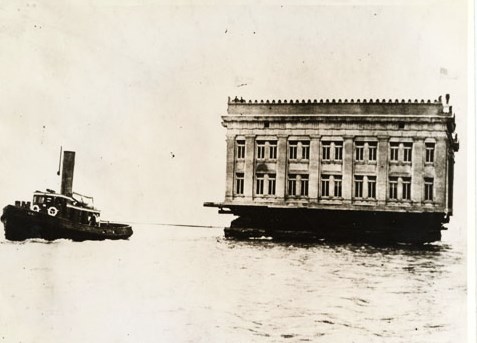
photo courtesy of San Francisco History Center, San Francisco Public Library
Removing the Buildings Once the fair was closed to the public, the Exposition Company had the enormous task of cleaning out the entire site. Hoping to recoup some additional revenue, the company sold every fixture, piece of equipment, plant and building off to the highest bidder. A few agencies and municipalities purchased the smaller buildings that could be transported by boat to new locations. San Mateo County purchased the Ohio Building;Marin County purchased the Wisconsin and Virginia Buildings;the army maintained the Oregon Building on its Presidio location as a military clubhouse. Some of the larger buildings that were too big to move, like the Tower of Jewels, were disassembled and sold to scavengers. Unfortunately, because the fair buildings were only constructed of plaster, faux travertine and chicken wire, they did not last as long as permanent buildings;once the buildings reached a serious level of deterioration, they were demolished.
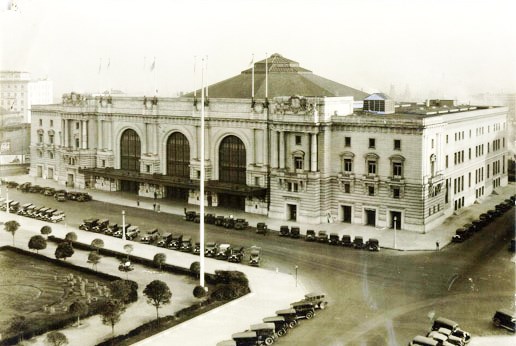
photo courtesy of San Francisco History Center, San Francisco Public Library
Vestiges of the Fair throughout the City of San Francisco Today the City of San Francisco still benefits from some construction and infrastructure improvements originally associated with the Panama-Pacific International Exposition. As originally promised, the Exposition Company spent some of its profit on a civic building;they paid for the construction of the San Francisco Civic Auditorium (now the Bill Graham Civic Auditorium.) In 1913, the city built the Stockton Street tunnel, the Van Ness Avenue median strip and developed the and San Francisco Municipal Railway (MUNI) System to improve transit access from the downtown area to the fair's waterfront. Although the elgant fair buildings did not withstand the test of time, many of them inspired permanant copies. Exhibition architects based the design for the elegant French Pavilion on Paris' Palais de la Legion d'Honneur. Alma Spreckels, wife of sugar magnate Adolph Spreckels, so admired this pavilion building that after its demolition, she and her husband gifted an exact replica to San Francisco. Constructed at Lands' End, the Spreckels funded the Legion of Honor building as both a memorial to honor the fallen World War I solders as well as a museum to house much of the city's great art. Bernard Maybeck's Palace of Fine Arts still stands. After the fair's closure, several San Francisco preservation organizations banded together to save the much-admired building. By the 1960s, the original building had so declined that the City of San Francisco decided to reconstruct a copy of the original in its place. 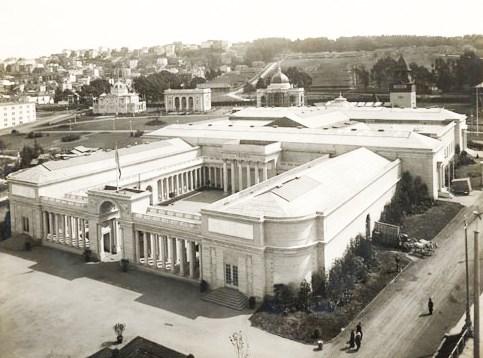
photo courtesy of San Francisco History Center, San Francisco Public Library Creation of the Marina District 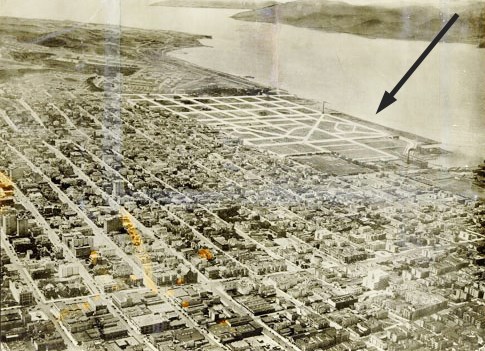
photo courtesy of San Francisco History Center, San Francisco Public Library 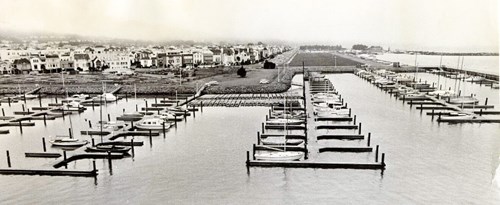
photo courtesy of San Francisco History Center, San Francisco Public Library
For More Information To see more photos and maps, please visit the Panama-Pacific International Exposition home page. To learn more details about the Exposition, including the pavilions, the state and international buildings, the role of the military and the sports and events, please visit The Year of the Panama-Pacific International Exposition. To learn about the events leading up to the fair, please visit Prologue to the Panama-Pacific International Exposition. Take a stroll along former fair grounds with the Panama-Pacific International Exposition walking tour. |
Last updated: October 17, 2016
